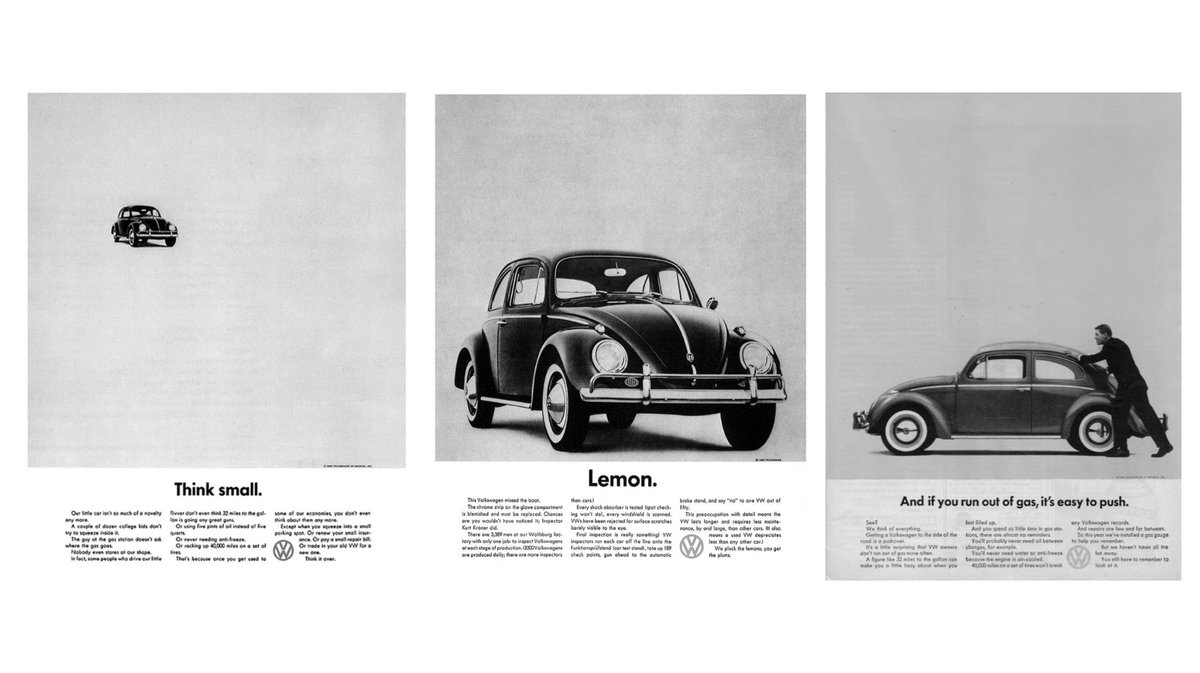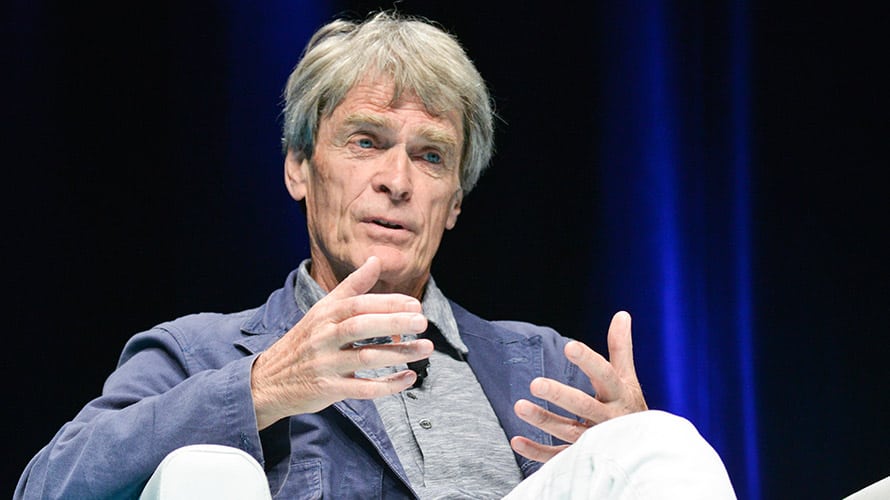
Guinness’ ‘Surfer’ EXPLAINED
A thread explaining how the best ad ever made came to life against all odds.
A thread explaining how the best ad ever made came to life against all odds.

1) Some say that if you work in advertising, you have a moral obligation to say Guinness’ ‘Surfer’ is your favourite ad. They are not wrong.
2) That’s because ‘Surfer’ is the perfect ad. The 60’ film is one of those pieces of advertising that inspires a generation to join the industry to make ads that are not shit.
3) ‘Surfer’ is a 60’ television film created by Abbott Mead Vickers (AMV) released in 1999 to promote the beer brand Guinness. The ad was voted the greatest ad of all time in the UK by Sunday Times readers and Channel 4 viewers. 

4) In 1998, Guinness was in trouble. Sales growth was timid and the brand lacked appeal amongst the more young and urban audience.
Back then Guinness was seen as an old man’s drink because only they would have time to wait for the three-parts pour.
Back then Guinness was seen as an old man’s drink because only they would have time to wait for the three-parts pour.
5) Before 1998, creative work was being done by Ogilvy, which made strong ads for the company like the “Man with the Guinness” campaign.
But when Andy Fennell joined the marketing team at Guinness, he said the brand’s performance was “lacking somewhat”.
But when Andy Fennell joined the marketing team at Guinness, he said the brand’s performance was “lacking somewhat”.
6) Fennell believed the brand had to be perceived as more sophisticated to grow faster. To achieve that, he believed a new agency was needed so a review was opened for the Guinness account. 

7) Four agencies were invited to pitch, including AMV, one of the most hyped agencies in London in the 1990s. Fennell briefed David Abbott (one of the agency’s founders; left) and Andrew Robertson (CEO; right), who came back to the office to talk to the creatives. 

8) Walt Campbell was the art director on the pitch. He decided to explore an idea the client directly wanted to steer away from.
The brief read: “The Guinness extended pour time shouldn’t be mentioned, as the dwell may well be a potential barrier to a younger demographic.”
The brief read: “The Guinness extended pour time shouldn’t be mentioned, as the dwell may well be a potential barrier to a younger demographic.”

9) “I felt the ‘pour’ was a treasured part of the Guinness experience. I’d seen mates who are devoted Guinness drinkers look at the settling glass with a distinct sense of longing. Wanting the result of the wait and yet wanting the wait at the same time” said Campbell.
10) Abbott liked the rogue thinking and gave the blessing to go against the brief.
The product truth AMV explored was the time it takes to pour a pint of Guinness and how they could make it a positive by using the line ‘Good things come to those who wait’.
The product truth AMV explored was the time it takes to pour a pint of Guinness and how they could make it a positive by using the line ‘Good things come to those who wait’.
11) The pitch started with strategy, then scripts for TV ads and posters to sell the new product truth. The first script was for a spot called ‘Swim Black’, which Fennell recalled was the “only time in my entire career when I’ve commissioned a script as it was presented”.
12) AMV got the business and ‘Swim Black’ went into production.
‘Swim Black’ was a complete departure from the type of ads Guinness was doing. In the 80s & 90s, the drink’s black colour and creamy white head were the selling points, all with a tongue in cheek sense of humour.
‘Swim Black’ was a complete departure from the type of ads Guinness was doing. In the 80s & 90s, the drink’s black colour and creamy white head were the selling points, all with a tongue in cheek sense of humour.
13) “Swim Black” celebrated success and played with the notion of time to pour a Guinness in a fresh positive way. It was the first ad signed off with the new line ‘Good things come to those who wait’. The new cinematic looking ad was also a new territory for Guinness. 

14) Another important decision was to pick star director Jonathan Glazer (left) to work on the film. Glazer would play a huge part in the development of ‘Surfer’ over the following year. 

15) ‘Swim Black’ was released in May 1998 with immediate success. Sales reportedly increased over 10% and the ad won important creative awards. It also established the creative foundation for AMV to expand on the next execution.
16) The genesis of ‘Surfer’ was a comment made by the client during the pitch. Campbell had created a poster with a Polynesian surfer looking out at the ocean.
“I would like to do something with surfers. We’ve started working with some of these guys in Cornwall” said Fennell.
“I would like to do something with surfers. We’ve started working with some of these guys in Cornwall” said Fennell.
17) The first script presented to the client showed the story of a surfer in the search of the perfect wave. Like ‘Swim Black’, time was the theme of the film, making the parallels of surfing with waiting for the perfect pint of Guinness to pour.
18) The work was also rich in references from Moby Dick to Roman Mythology. Visually, the storyboards featured surfers and horses fighting against huge waves, inspired by Walter Crane’s 1893 painting ‘Neptune’s Horses’. 

19) Fennell loved the idea and gave the nod to engage Glazer to direct the spot, however he faced a lot of challenges internally, taking months to sell in the ad to the Guinness’ bosses.
With the idea approved, next up was a trip to Hawaii to shoot surfers riding 30ft waves.
With the idea approved, next up was a trip to Hawaii to shoot surfers riding 30ft waves.
20) Another challenge was to find the right actor to be the protagonist. Glazer didn't want a polished model or a seasoned actor. He wanted the real thing: a man waiting for the perfect wave.
They struck luck by finding a surfer with the right looks chilling by the beach.
They struck luck by finding a surfer with the right looks chilling by the beach.

21) The 8 days of shooting proved to be dangerous. “Like filming an avalanche,” recalled Glazer.
The cameraman hung from the front of a speedboat and Glazer was himself racing against the waves to capture the perfect shot.
The cameraman hung from the front of a speedboat and Glazer was himself racing against the waves to capture the perfect shot.
22) Before the crew set off to Hawaii, a decision was made to not use CG and to shoot the horses live-action to be integrated digitally with the shots of the waves later by The Computer Film Company (CFC).
24) With both shots of the horses and of the surfers in hand, it was time to integrate both, which proved to be almost impossible initially by the CFC. Perspectives, rate of motion and integration were the main compositing challenges.
25) Eason recalled “It was a tough project. I remember very clearly that Jonathan Glazer was in the corner of one of the suites at CFC, with his head in his hands saying, ‘It’s all shit.’ I’ll never forget. We did have dark moments where we didn’t think it could be done.”
26) After a few technological breakthroughs and lots of long nights, the CFC crew cracked the challenge and made the horses work with the surfers. It felt like a miracle to everyone involved. 

27) And to think that in one of the final reviews, one of the clients asked: “Do we really need the horses?”
28) The ad was finally ready and it only needed to clear research to go live. However, the ad performed terribly in testing.
Fennell ignored the research and trusted his instinct that the campaign would work. A gutsy call by a gutsy client.
Fennell ignored the research and trusted his instinct that the campaign would work. A gutsy call by a gutsy client.
29) ‘Surfer’ was released on March 17th 1999, becoming an immediate phenomenon in the UK.
On the Channel 4 airing of 100 Greatest TV Ads, TV Presenter Kate Thornton remembered the instant success of 'Surfer’ “I don’t know a single person who wasn’t impressed by that ad.”
On the Channel 4 airing of 100 Greatest TV Ads, TV Presenter Kate Thornton remembered the instant success of 'Surfer’ “I don’t know a single person who wasn’t impressed by that ad.”
31) ‘Surfer’ is a brilliant example of arts applied to commerce. The film was inspired by a 19th century painting, by Roman mythology and by classic literature; all to create a film to promote a beer brand to the British public.
32) ‘Surfer’ is the perfect ad because it checks all boxes of brilliant advertising: a clear business problem. A strategy that is ownable. A creative concept that captures the product truth. Impeccable film craft. Great acting. An outstanding director. And a brave client.
33) Ads like ‘Surfer’ are the exception because what we create is art, which can’t be automated into a repetitive process.
Craft, inspiration, time and luck are needed to create enduring advertising. And it’s never a guarantee.
A surfer needs to wait for the perfect wave.
Craft, inspiration, time and luck are needed to create enduring advertising. And it’s never a guarantee.
A surfer needs to wait for the perfect wave.
34) Main sources for this thread:
lbbonline.com/news/my-most-i…
campaignasia.com/article/my-cam…
cws.cengage.co.uk/yeshin/student…
marketingweek.com/guinness-surfe…
creativemoment.co/creative-class…
thedrum.com/opinion/2019/0…
beforesandafters.com/2019/03/18/gui…
lbbonline.com/news/my-most-i…
lbbonline.com/news/my-most-i…
campaignasia.com/article/my-cam…
cws.cengage.co.uk/yeshin/student…
marketingweek.com/guinness-surfe…
creativemoment.co/creative-class…
thedrum.com/opinion/2019/0…
beforesandafters.com/2019/03/18/gui…
lbbonline.com/news/my-most-i…
30) The film helped Guinness to achieve their biggest sales volumes and market share to date. ‘Surfer’ was voted the greatest ad of all time by the Sunday Times and Channel 4. It won awards at the Clios, the D&Ad and won a Gold Lion at the Cannes Festival in 1999.
• • •
Missing some Tweet in this thread? You can try to
force a refresh












